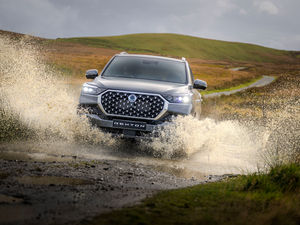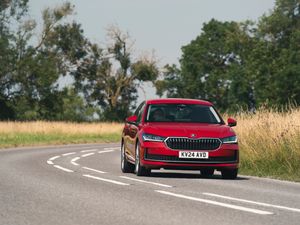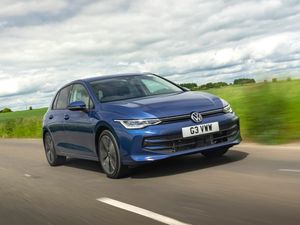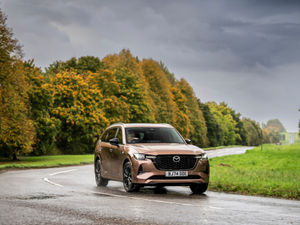First Drive: Can the new Ford Puma eclipse the success of its predecessor?
The Puma is a key best-seller for Ford, so can some recent changes help boost its popularity even further? Jack Evans finds out.
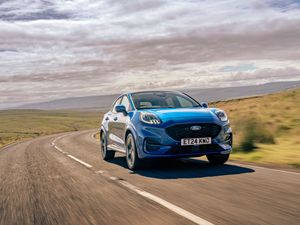
What is it?

>
Buyers have been dismayed at the cancellation of the famous Fiesta, but its stablemate model the Puma – which shares a platform with the now-canned model – has done well to challenge the Fiesta in the popularity stakes. A routine sight on the list of monthly best-sellers, the Puma has been a big hit for Ford. A new version has now been introduced to help bolster this support even further while introducing some clever new tech.
But with such demand for the previous-generation model, could this be a case of messing with the recipe too much? We’ve been behind the wheel to find out.
What’s new?

>
Externally, there’s been a decision to not shake things up too much. This new Puma remains based on the same platform as the car which can before it – so there can only be too many big revisions – and it’s why the outside still looks quite familiar. The big changes, however, come inside where you’ll now find a far more tech-focused approach with fewer physical buttons than before.
The good news is that the Puma hasn’t lost any of the aspects which made it so popular. It remains quite compact overall, while there’s that slightly raised seating position which does give you an elevated view of the road ahead compared to a traditional city car or hatchback.
What’s under the bonnet?

>
As before, you’ll find largely small-capacity engines under the bonnet of the Puma, promising lower emissions and improved fuel efficiency. In fact, all versions of the Puma come with a 1.0-litre turbocharged petrol engine of some sort, with the one in ‘our’ car pushing out 123bhp and 170Nm of torque, equating to a 0-60mph time of 9.4 seconds and a top speed of 118mph.
However, thanks to the inclusion of mild-hybrid technology which helps to lift some of the stain off the petrol engine, Ford claims you should get up to 49.6mpg combined while CO2 emissions stand at 131g/km. It’s right on the money in terms of efficiency, then.
What’s it like to drive?

>
The good news is that thanks to having the same proportions as before, the new Puma is just as easy to park and live with day-to-day. Rearward visibility is quite limited – just as it was before – but your forward view is clear and there are all manner of sensors and cameras there to help you out if you need a little extra assistance. The new steering wheel is a bit of a pain, mind you; it’s too large for the rather compact Puma and its near-rectangle shape feels cumbersome in your hands. The same can be said for the rather old-school, chunky gear shifter.
The ride is quite firm – no doubt because of our car’s sporty ST-Line treatment which brings larger wheels – but that does give the Puma a more dynamic edge. However, we’d rather a slightly comfier focus, so it may be better to opt for a non-ST-Line version if this sounds more appealing to you, too.
How does it look?

>
As touched upon, Ford hasn’t messed with the look of the Puma too much. The most noticeable is the repositioning of the Ford badge from the nose of the car to the front grille. It’s quite a big change, but does now mean that it appears that the Puma is ‘eating’ its own badge. Around the back, things are much the same as before, however.
You’ve got five exterior colours to choose from, too, ranging from a rather regular white to a more eye-catching red. As before, there are plenty of specifications to pick between as well, with ST-Line cars like our test car bringing a sportier focus, while Titanium-grade cars dial this back in favour of a more traditional look.
What’s it like inside?

>
The previous Puma managed to squeeze a lot of space from a relatively small package and that’s much the same case here. Those up front have a good view of the road ahead and those in the rear don’t do too badly either, though taller passengers may find themselves feeling slightly bunched up.
When it comes to boot space, the Puma still excels. Much of this comes from the handy ‘MegaBox’ storage area under the boot floor but, including this, you get an impressive 456 litres of space to use up, which is more than many cars from the class above are able to offer. Fold the rear seats and this expands to a healthy 1,216 litres so for a car as compact as this, the Puma brings very few drawbacks practicality-wise.
What’s the spec like?

>
In ST-Line specification the Puma starts at £26,700, up from the £25,800 you’ll pay for an entry-grade Titanium car. Standard equipment is good, mind you, with 17-inch wheels included from the off alongside LED headlights and a full digital instrument cluster.
One of the most noticeable new inclusions is the massive 12-inch main display. It’s where you’ll access all of your key features such as navigation and media and while it does get a whole lot of functionality, it’s a little overbearing – very few physical controls remain, so adjusting simple aspects such as the heating and ventilation is more of a hassle than it was on the older Puma. Fortunately, there’s still a physical knob for the volume – but it would be nice if there were more for other applications.
Verdict
In many ways, the new Ford Puma was tasked with a difficult assignment. After all, the original ‘new’ Puma was so accomplished that it went down a treat with all types of buyers, so any replacement was always going to suffer an uphill struggle. In plenty of areas, the new Puma does build on things with more technology and a slightly sharper look. Fortunately, many of the plus-points of the older Puma have been retained, with this car’s practicality and easy-of-use making it an easy car to recommend to those who value both.
While we’d like a few more physical buttons – and the old Puma’s steering wheel back – this is still a very user-friendly crossover.


